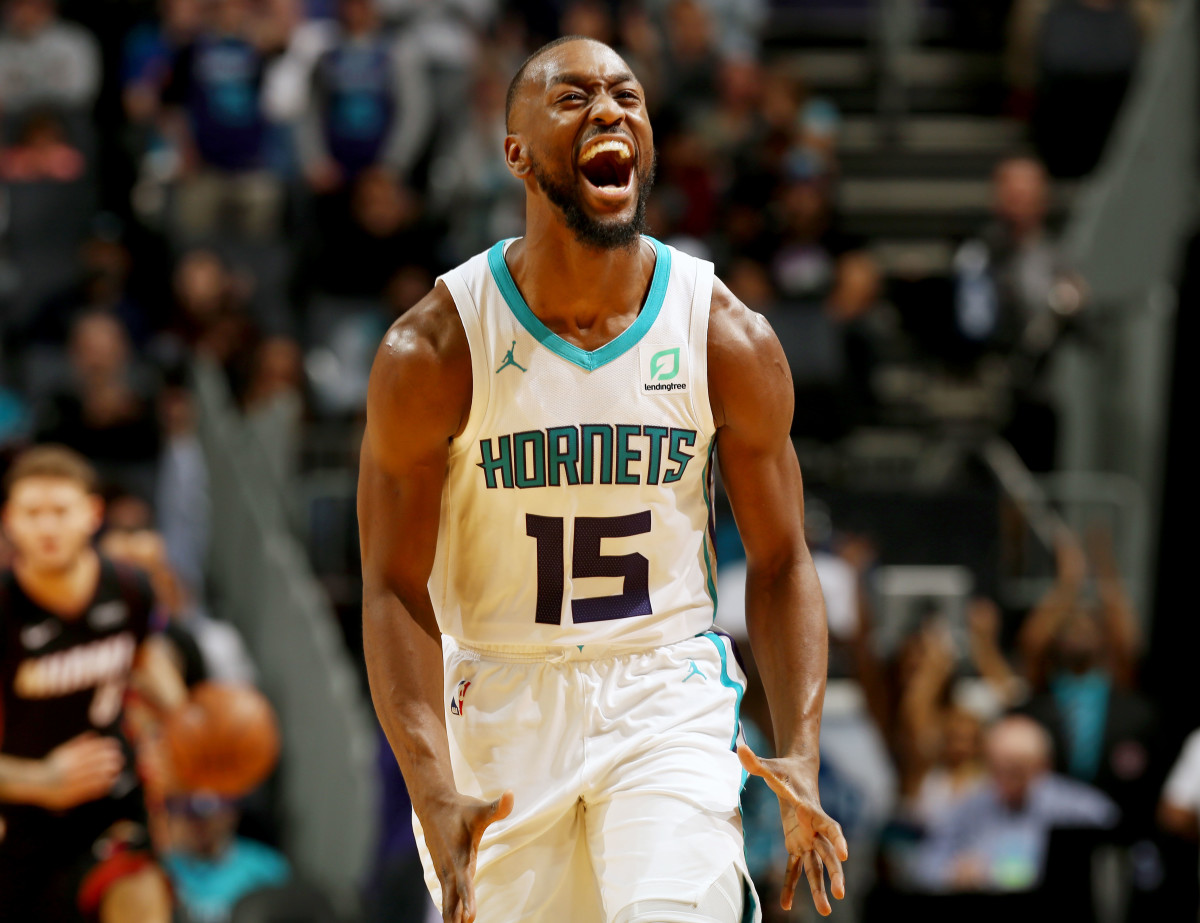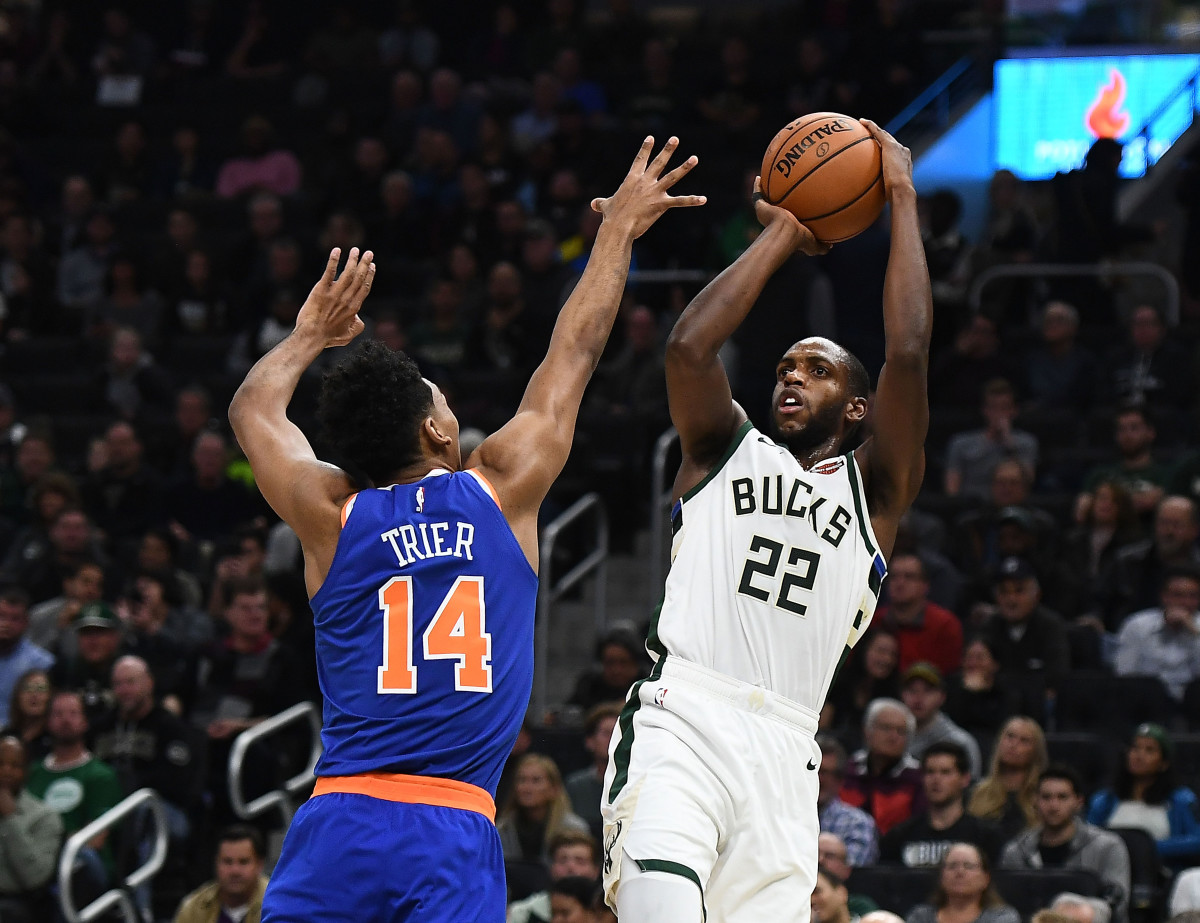The Second Wave of the NBA's Three-Point Revolution Has Arrived

The second wave of the three-point shooting revolution has crashed on the NBA, shifting the priorities of players everywhere. The Warriors were only the beginning. Barring some dramatic turn of events, the NBA will set an all-time record for three-point attempts for the eighth year in a row—growth on growth on growth. Tactics have evolved. Tendencies are changing. An open three is as good as gold in the modern NBA, and a contested one only slightly less precious.
With that comes a degree of reprogramming. Change like this doesn't come by bringing entire ranks of new shooters into the league, but changing the habits of those already well established. Let's take a closer look at a few players who have noticeably adjusted their approach to the three ball:

Kemba Walker, Hornets
2017-18: 10.7 three-point attempts per 100 possessions
2018-19: 15.5 three-point attempts per 100 possessions
There’s more than a little Steph Curry in Walker’s game these days—fitting, considering that only Curry averages more three-point attempts per 100 possessions. Any routine ball screen for Walker could end in a pull-up, a sidestep, or a step-back three. Give him an inch and he’ll take 23 feet. Gone is the player who would come around that screen to run some deliberate offense. In his place is one of the NBA’s most dangerous scorers: a guard who needs exceedingly little space to get off a clean shot and has every trick in the book to create that space for himself. If the defender isn’t meeting Walker at the level of the screen (or higher), they’re already cooked:
The majority of Walker’s three-point attempts come a few steps to the left or right from the top of the floor, with a blank space where a high screen would go. No player this season has created so many of their own three-point looks, per NBA.com, and, really, James Harden is the only other player even close. Trae Young, whose entire premise as a player begins with his willingness to bomb away from ungodly depths, attempts half as many pull-up threes per game as Walker. He has become a spread offense unto himself, complete with the means to scale up his attempts so long as he controls the ball. Trapping Walker may be the best means of surviving him, but be warned: if he gives up the ball and gets it back for a clean spot-up attempt, his shot is even deadlier.
Shabazz Napier, Nets
2017-18: 7.1 three-point attempts per 100 possessions
2018-19: 13.3 three-point attempts per 100 possessions
The fundamental difference in Shabazz Napier, the Trail Blazer, and Shabazz Napier, the Net, is license. Portland runs a smart, flexible offense but is fairly deliberate at its core. For every one of Damian Lillard’s quickfire jumpers, you’ll find a half-dozen other possessions strung out by staggered screens and split cuts. Brooklyn has some of that in the works, too, but isn’t above any opportunity at an open three—particularly where its guards are involved. This manifests most overtly with Napier, who in joining the team has nearly doubled the frequency of his three-point shooting by firing up shots like this one:
Napier wasn’t shy about shooting last season—only subject to different expectations. The Nets need Napier to shoot. For teams operating without star-level talent, the great equalizers are effort and long-range shooting. Both are Brooklyn staples, and the core of what Napier brings to the second unit. Emboldened by that freedom, Napier is chucking up threes at a top-five rate on a per-possession basis, and making nearly half his shots in the process.

Khris Middleton, Bucks
2017-18: 6.8 three-point attempts per 100 possessions
2018-19: 10.8 three-point attempts per 100 possessions
Over the past few seasons, Middleton had grown cozy with the long two, a shot he could step into whenever he liked and knock down with regularity. It was easy. Familiar. But growth requires that we abandon such comforts, and as Milwaukee has completely remade the profile of its offense, so, too, has Middleton. The security jumpers have been all but erased from his game— replaced, instead, by back-breaking threes over the top of well-intentioned defenders. Middleton is apparently the sort of player who can drop this sort of dancing, leaning three with casual regularity:
There aren’t many analogues for Middleton this side of Kevin Durant, if only because so few players his size both handle the ball and manufacture their own offense. Put a smaller defender on Middleton and he’ll gladly escort them to the post. Try a larger one and you’ll likely sacrifice too much in speed—a more pressing concern now that Milwaukee plays at one of the fastest paces in the league. Often that leaves Middleton to work against whatever in-between option opponents can scrounge up—virtually all of whom are vulnerable to his long-range shooting. Middleton will launch threes over smaller wings with ease and exploit any space given him by firing away. The result, it seems, is a career 40% three-point shooter taking as many threes as James Harden. This evolution has been a long time coming, and already we’re seeing it tip the balance of Middleton’s fuller offensive game.
GOLLIVER: Ten NBA Records the Warriors Should Try to Break
Reggie Jackson, Pistons
2017-18: 7.0 three-point attempts per 100 possessions
2018-19: 11.1 three-point attempts per 100 possessions
For the Pistons to manage any kind of stable offense around Blake Griffin and Andre Drummond, they needed to muster shooting from a lineup that had little. Thus far, they’ve managed—in part because both of their point guards have been more willing to fire away and proven more capable of spacing the floor. For Jackson, the three is most valuable as an active threat. If defenses aren’t forced to honor the fact that Jackson could pull up for a three, they can get away with lower-stress coverage. They can lean toward Griffin and Drummond, taking away their opportunities in the process. The most important shots for Jackson are those that force the defense to reconsider how they cover him, which makes them less about a made basket than the next few possessions or minutes or quarters. It all comes down to shots like this one:
If Jackson can make Terry Rozier chase him over that screen rather than go under it, Drummond gets to roll downhill. So far he’s making enough to force some defensive adjustment in-game, though not in the scouting report. These things take time, and Jackson, frankly, still needs to prove that he can convert those shots at even a league-average rate. Taking them with this kind of confidence—and leading the Pistons in three-point attempts!—is a great start. This is a dynamic worth watching, especially considering how potent the Pistons’ offense has been when playing Jackson and backup point guard Ish Smith (who is in the midst of his own three-point awakening) together, and how quickly those lineups could crumble if the shots stop falling.
Aron Baynes, Celtics
2017-18: 0.7 three-point attempts per 100 possessions
2018-19: 8.3 three-point attempts per 100 possessions
The idea of Baynes as an occasional three-point shooter began some six months ago, but it’s easy to forget that he had made just four threes in his entire career prior to the 2018 playoffs. Baynes has converted that many in just 58 total minutes this season, where he has continued to hit at a punishing 40% clip. Already we’re seeing him branch out from the corners, putting his newfound shooting talents to work in pick-and-pop scenarios where his higher-profile teammates draw multiple defenders:
The best ways a role player can contribute to a loaded offense (even if Boston doesn’t look like one at the moment) are to make themselves a threat and to make themselves available. In expanding his range, Baynes has done both—offering an easy outlet when opponents understandably load up against Kyrie Irving or Jayson Tatum. For now, Boston’s confidence in Baynes clearly outpaces its opponents. Relative to pace and playing time, Baynes is taking threes at roughly the same frequency as Trevor Ariza and Josh Hart, a floor-spreading shooter hidden in plain sight. The only real response is to treat Baynes as an actual threat from beyond the arc, which is exactly the point of his spacing to that range in the first place.
